Domestic MANPADS: "Arrows"
"Arrow-2"
By the beginning of the fifties, the Soviet military knew that work was underway on creating advanced MANPADS in the United States and other foreign countries. After receiving information about the first tests of such systems and, as a result, about the fundamental possibility of creating a portable anti-aircraft missile system, the USSR military wanted to get their own weapon of this class. The development of the first domestic MANPADS started in accordance with the decision of the Council of Ministers on August 25 1960 of the year.
The developers of promising missile technology were required to create an easy air defense system, suitable for the implementation of air defense of troops on the march and in positions. Within the framework of the new project, it was supposed to develop a self-propelled air defense missile system (it later became the Strela-1 complex), as well as a portable system of similar purpose. The design bureau of both anti-aircraft complexes was assigned to SKB GKOT (now KB engineering, Kolomna). The chief designer was B.I. Shavyrin. After his death in 1965, all the works were supervised by S.P. Invincible.
MANPADS "Strela 2" was the first such development of the Soviet designers, because of which the creation of the project was associated with serious difficulties. Work on the complex began with a brainstorming session. Employees of SKB GKOT analyzed the features of the operation of the new system, and also discussed a number of proposals. The result of several days of continuous discussion was the overall appearance of the complex, which, with minor changes, reached the stage of mass production. Later, having received the first information about the American FIM-43 Redeye MANPADS, the Kolomna designers learned that their foreign colleagues used the same or similar technical solutions.

The Strela-2 complex was to consist of several elements: a launch tube with a block of necessary equipment and a guided missile. According to the results of the comparison of existing systems, it was decided to equip the rocket with an infrared homing head. Such a seeker had acceptable dimensions and sufficiently high target detection characteristics. Development of the homing head was entrusted to Leningrad OKB-357. In addition, the State Optical Institute was involved in the work.
When developing the 9М32 rocket, several important issues needed to be resolved. The first of these concerned infrared hf: it was required to create a compact and lightweight device to gyrostabilize the head (the so-called coordinator). Despite all the difficulties, OKB-357 designers managed to create a homing head weighing about 1,2 kg. The second major problem was ensuring the launch of the rocket in various conditions. The rocket had to be launched by the anti-aircraft gunner both in a standing or knee position, as well as from trenches or hatches of armored vehicles. This issue was resolved with the help of a launch charge, which was supposed to throw a rocket out of the launch tube. It was proposed to launch the sustainer after the rocket was removed from the shooter to a safe distance.
SKB GKOT engineers had to work on the aerodynamic shape of the rocket. The use of infrared seeker required to equip the rocket with a hemispherical head fairing, which accordingly affected flight data. Because of such a fairing, a rocket could quickly lose speed after burning a charge on a solid-fuel engine. To reduce aerodynamic drag, the rocket was made in a small caliber (72 mm) and a large elongation (product length 1420 mm).
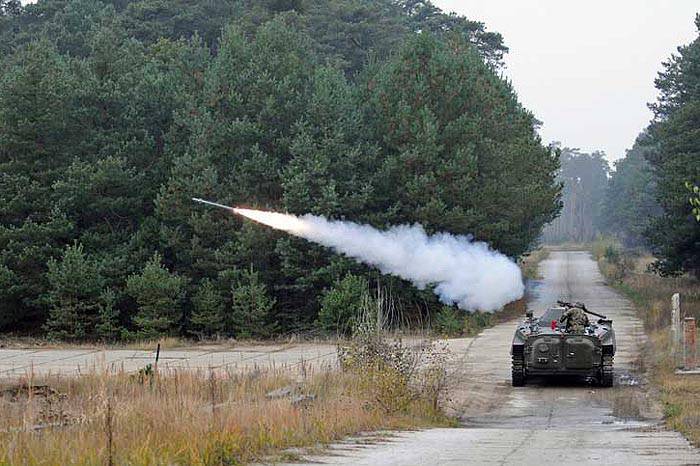
Launch of the Strela-2 MANPADS onboard the infantry combat vehicle BMP-1
Rocket 9М32 had a cylindrical body with rudders in the bow and stabilizers in the tail. It is noteworthy that the rocket had only two rudders installed in the same plane. Guidance on the target was proposed to be carried out using rocket pitch control during its constant rotation around the longitudinal axis. When the rocket was in the launch tube, the rudders were sunk into the hull, and the stabilizers folded behind the tail section. After ejection from the pipe, they had to be decomposed using special springs. Ammunition with a launch weight of 9,15 kg was equipped with a high-explosive fragmentation warhead weighing 1,17 kg. With such dimensions and mass, the combat unit could ensure effective destruction of the target only with a direct hit.
The new engine allowed the Strela-9 32М9 complex of the Strela-32 complex to reach speeds up to 2 m / s and hit targets at a distance of up to 600 meters and an altitude from 3600 to 50 m. MANPADS. Effective defeat of the target was possible only when shooting in pursuit. To detect a target from the front hemisphere, the head had insufficient sensitivity. MANPADS "Strela 1500" allowed to fire aerial targets flying at speeds up to 2 m / s.
In addition to the rocket, the launch tube and the trigger mechanism were included in the Strela-2 MANPADS. The launch tube 9P54 served as a transport and launch container and was designed for the safe transportation and use of the rocket. The 9P53 starting mechanism included a number of equipment necessary for launching a rocket: an electronic unit, a starting mechanism, mechanisms for attaching a device to a pipe, etc. The Strela-2 complex, ready for use, weighed 14,5 kg.
The use of the first domestic MANPADS looked as follows. After the air target was visually detected, the anti-aircraft gunner had to turn on the power source and bring the complex into a combat position. For about 5 seconds, the automatics spun the gyroscope. After this, the shooter was to use a sighting device to direct the missile at the target. When the GOS produced its capture, the complex alerted the operator with a light and sound signal. Then, by pressing the trigger, the homing head was switched to the target tracking mode and the starting charge was ignited.
With a speed of about 30 m / s, the 9М32 rocket left the launch tube, simultaneously unfolding the steering wheels and stabilizers. When ejected from the pipe, the rocket was rolled up to 15 revolutions per second. In addition, at this moment, the first fuse level was turned off. After 0,3 seconds after the launch of the rocket from the launch tube, the main engine was started and the second stage fuse was switched off. To catch up and hit the target, the Strela-2 missile had no more than 12-14 seconds. After this time, the self-destruct functioned.
The Strela-2 portable anti-aircraft missile system was put into service in the 1967 year. Soon after, the delivery of new anti-aircraft systems to friendly countries began. Egypt was the first foreign country to receive Strela-2. Soviet specialists and the Egyptian military quickly tried out new weapons in battle and were convinced of their high efficiency. Hiding from the well-known anti-aircraft missile systems, Israeli aircraft broke through to targets at low altitude. In the middle of 1969, the Egyptians were able to control these heights. As a result, the enemy began to suffer losses. For example, on one of the days of August 69, Israel lost 6 aircraft from Egyptian MANPADS. All other elements of the Egyptian air defense on that day were able to destroy only 4 aircraft.
MANPADS 9K32 “Strela-2” were supplied to more than 50 countries and were actively used in various armed conflicts. On account of these systems dozens of destroyed enemy aircraft and helicopters. The first domestic portable anti-aircraft missile system clearly showed all the advantages of this class of weapons.
Strela-2M
Despite the positive aspects shown, the Strela-2 MANPADS had a number of serious drawbacks. A light warhead could not cause serious damage to the target, and the impossibility of an attack from oncoming courses did not allow an increase in damage. Thus, it was necessary to modernize the rocket in order to improve its characteristics. Resolution of the Council of Ministers on the modernization of Strela-2 MANPADS issued 2 September 1968.
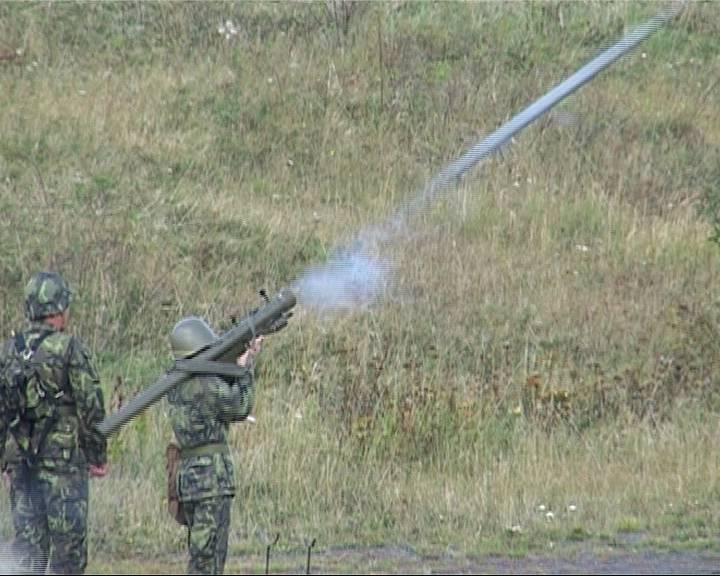
During the 9K32M project, the Strela-2M created an updated 9М32М rocket. It differed from the base product by a large number of new elements and, as a result, by higher characteristics. After upgrading the length of the rocket increased to 1438 mm, and weight to 9,6 kg. The new engine allowed not only to save, but also to improve the performance of the rocket. The heavier product of the 9K32M complex could hit targets at a distance of up to 4200 m and a height from 50 to 2300 m. The maximum rocket speed increased to 630 m / s.
The 9М32М rocket received a new more advanced infrared homing head. Due to the greater sensitivity, the new system could ensure destruction of targets not only on catch-up courses, but also on counter courses. The maximum target speed when shooting in pursuit increased to 260 m / s. From the opposite course, it was possible to attack targets flying at speeds up to 150 m / s.
After upgrading, the processes of capturing the target and launching the rocket at speed targets on the catch-up courses were automated, which simplified the use of the complex. GOS was able to select a moving target against the background of natural fixed noise. Thus, effective work of the homing head was ensured when the target was found against the background of continuous clouds of less than three points. With greater cloudiness, the Strela-2M MANPADS zone was significantly reduced. It should be noted that the Strela-2M complex, like its predecessor, was not protected from false thermal targets.
At the factory, the 9М32М rockets were placed in the 9P54М launch tube with fixtures for the new 9P58 trigger mechanism. The pipe and the device of the Strela-2М complex were similar to the corresponding elements of the Strela-2 system, but could not be used with them. To avoid misuse, elements of two MANPADS had different docking devices. The total weight of the complex was 15 kg.
Modernization of the existing portable anti-aircraft missile system did not take much time. In October, 1969 began its joint trials. Test shooting, the ground for which was the Donguz test site, continued until February of the 1970 year. During tests, MANPADS 9K32M "Strela-2M" confirmed the declared characteristics and was recommended for use. The corresponding decree was issued in 1970 year.
"Arrow-3"
By the time the work began on the Strela-2M complex, it became clear that the further development of MANPADS involves the use of several new technologies. For a significant increase in performance required to create a new homing head with a higher sensitivity. For this reason, by the already mentioned resolution of the Council of Ministers on 2 of September 1968, it was necessary not only to upgrade the existing anti-aircraft system, but also to create a new one that would use modern components.
According to the analysis of the proposed options, it was decided to equip the missile of the advanced Strela-3 MANPADS with a new homing head with a cooling system. Calculations showed that in order to increase the sensitivity of the GOS compared to the 9М32 rocket by two orders, it would be necessary to cool its photodetector to the temperature -200 °. The development of the homing head was entrusted to the design bureau of the Kiev plant Arsenal.
The main element of the new 9K34 MANPADS "Strela-3" was the 9X36 guided missile. In comparison with previous missiles of the family, the 9М36 product had a slightly larger starting weight (10,3 kg) with similar dimensions (length 1427 mm, diameter 72 mm). The overall layout of the rocket remained the same: the GOS in the main compartment, the steering compartment with control equipment and the warhead compartment in the middle of the rocket and the large engine compartment in the tail section. The missile complex "Strela-3" retained the management principles used on previous ammunition of the family. The product was equipped with one pair of steering wheels and four stabilizers, which gave it rotation in flight. Management was still carried out by deflecting the rudders at the right moment.
Deep modernization led to the fact that the 9М36 rocket had the opportunity to hit targets at ranges up to 4500 m and altitudes 15-3000 m. The speed of the rocket decreased to 400 m / s. Thanks to the use of a new deep-cooled infrared homing system, the missile’s ability to detect and track targets has significantly increased. The high sensitivity of the GOS photodetector led to a noticeable improvement in rocket performance: the maximum range and height of target detection increased. In addition, maximum target speeds have increased. The 9М36 rocket could hit a target on a head-on course at its speed up to 260 m / s. For the attack in pursuit, the target speed increased to 310 m / s.
Also, the new GOS was less susceptible to natural interference and made it possible to effectively use the portable zenith complex in adverse weather conditions, with the possibility of visual detection of a target.
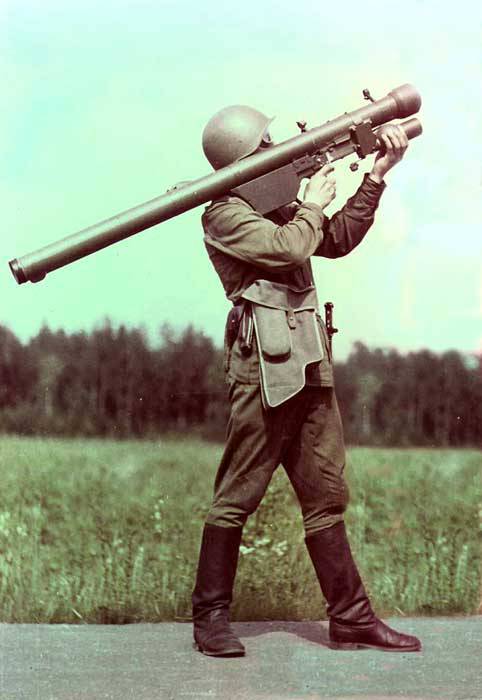
The 9М36 rockets were supplied in parts in 9P59 launch tubes made of fiberglass. The pipes could be reloaded and used up to five times. Before using the MANPADS, the 9P58M trigger mechanism and the 9C13 “Search” radio direction finder were attached to the mountings of the launch tube. The 9P59M trigger was a further development of devices from the previous Strela family of MANPADS. It consisted of equipment for the initial acceleration of the gyro rocket, as well as the anti-aircraft gunner warning system about the capture of the target. For the early detection of airborne targets with included radar stations, the passive radio direction finder 3C9 was included in the Strela-13 MANPADS. This system allows you to pinpoint targets at a distance of 12 kilometers. MANPADS assembly weighed 16 kg.
Also in the complex "Strela-3" included ground-based interrogator 1RL247, designed to determine the state of the aircraft. The interrogator could work in the systems "Silicon-2", "Silicon-2М" and "Password". The identification was made at distances up to 7-8 kilometers. The interrogator was not connected with the trigger mechanism and could not automatically block the launch of the rocket.
At the end of autumn 1972, tests of a new MANPADS began on the Donguz test site, which lasted until the spring of 73. In the course of these tests some weaknesses of the system were revealed, which were soon eliminated. The reason for the appearance of claims was the lack of reliability of the element base, which affected the characteristics of the entire system. However, all problems were solved before the end of the test. In mid-January 1974, the new 9K36 Strela-3 MANPADS was adopted.
Based on:
http://pvo.guns.ru/
http://rbase.new-factoria.ru/
http://kbm.ru/
http://rusarmy.com/
Vasilin N.Ya., Gurinovich A.L. Anti-aircraft missile systems. - Minsk: Popurri LLC, 2002
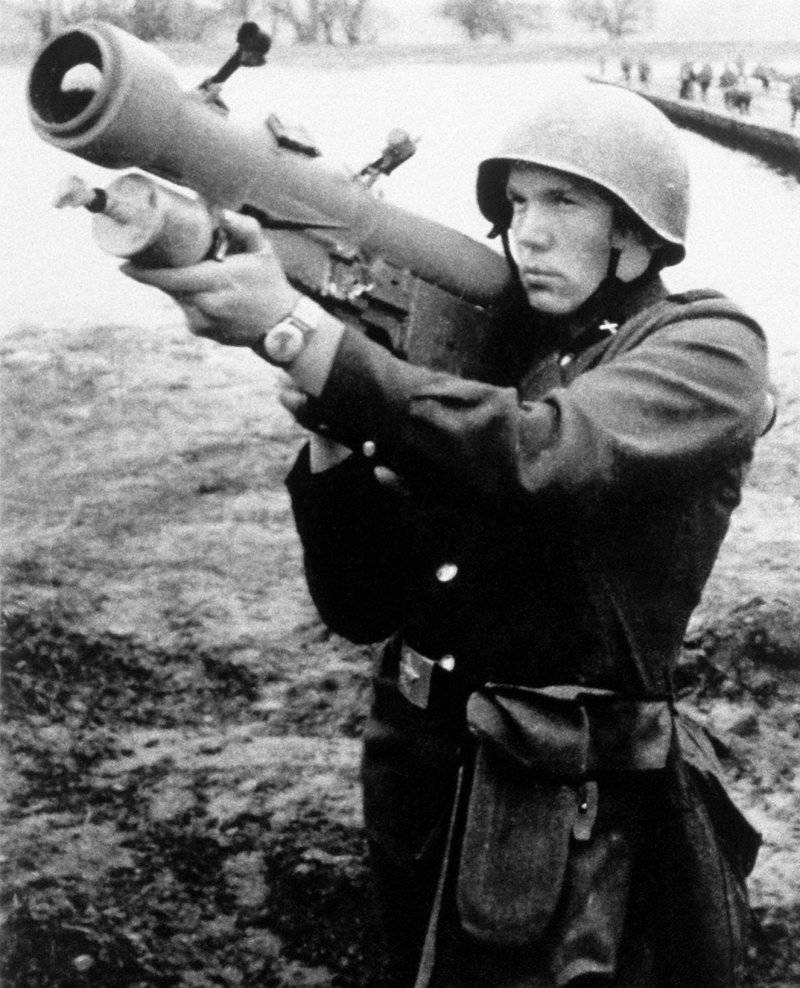
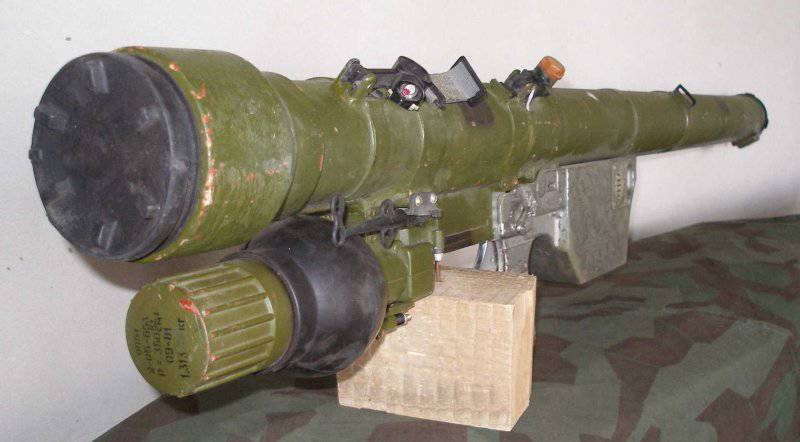
Information